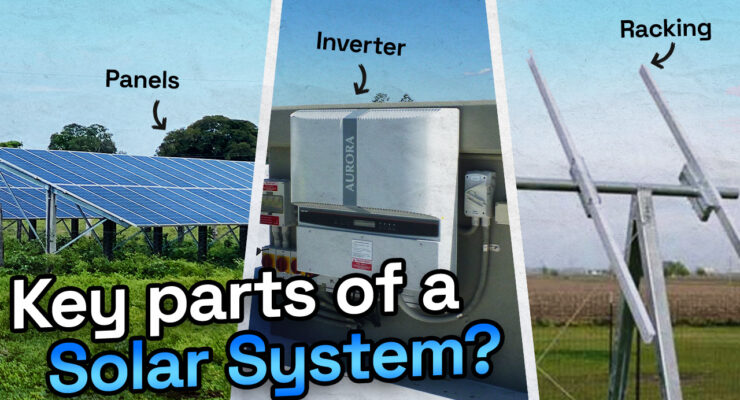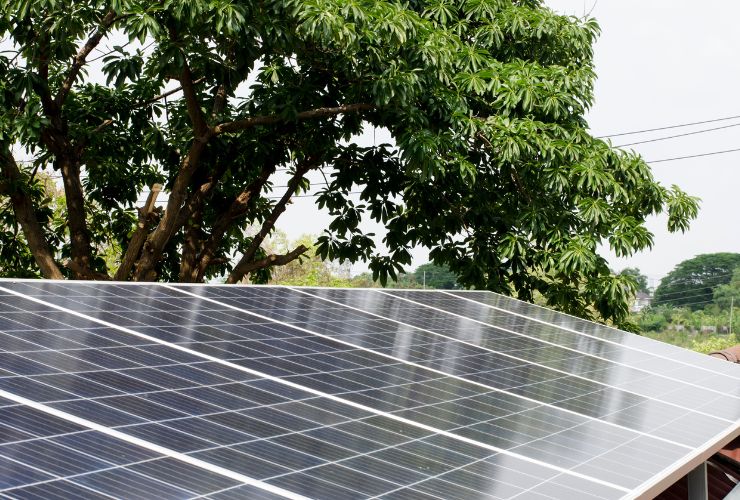
Fast read
A solar power system has three main parts: solar panels, an inverter, and the rest of the system. In this system, the main component is the solar panels; this is because they are known as the engine, as their role is to generate energy which occurs through the process of photovoltaics.
The inverter component allows for converting the direct electricity the panels generate into alternating current, often used in houses.
The system's balance is often overlooked. It includes cables, fuses, and racks. These three components work together to provide renewable electricity for a home or business.
What components make a solar power system?
I get asked regularly, what are the key components of a solar system? In general terms, three central components make up a solar system.
Solar Panels
The panels are known as the engines of a solar system. Solar panels are the driving force behind clean energy solutions for homes. Solar panels create electricity, but there’s a problem – the electricity they produce is not suitable for homes.
Panels, often hailed as the engines of a solar setup, are responsible for converting sunlight into electrical energy. While this innovation is eco-friendly and sustainable, it generates direct current electricity (DC) within the panels.
The hiccup lies in the fact that homes primarily run on alternating current (AC) electricity. This is where the challenge arises. To use solar energy at home, the electricity from solar panels needs to go through an important conversion process.
The key to unlocking the potential of solar energy for your home is converting DC to AC. This transformation is essential to align solar energy generated with the standard AC used in households. An inverter is the magic tool that accomplishes this conversion seamlessly.
Solar Inverter
In the world of solar energy, the inverter solution takes centre stage as the heartbeat of the system, converting DC electricity from solar panels into the usable AC electricity that powers our homes.
Selecting the appropriate inverter is a pivotal decision that influences the efficiency and durability of your solar system. Factors like solar panel type, shading, and budget affect the choice between microinverters and string inverters for your needs.
To fully utilise solar energy, two popular solutions, microinverters, and string inverters, offer different approaches to achieve this goal.

Balance of the system
In the realm of solar energy installations, the third and integral part is referred to as the “Balance of the System” (BoS). This encompasses critical elements such as cabling, fuses, and racking, working collaboratively to ensure seamless functionality and solar panel longevity.
Cabling
Cables transfer power from solar panels to the inverter and then to your home, acting as a network. The quality and design of these cables are pivotal, minimising energy losses and maintaining overall system efficiency. Proper insulation and installation are essential for the safe and reliable transmission of electricity.
Fuses
Acting as protective barriers, fuses play a crucial role in preventing electrical overloads and short circuits. These components prevent electricity flow in case of any issues. This ensures the safety of the solar panels and the entire electrical system, protecting your investment.
Racking
Providing the structural foundation, racking secures solar panels to rooftops or other mounting surfaces. This part has rails, connectors, brackets, and clamps, all working together to make sure the solar array is stable and integrated. Rails support, connectors connect, brackets add support and clamps secure panels to the roof.
Since there aren’t many key components of a solar system, it is easy to remember. Therefore, the answer to the question is that a solar system has three key parts.
- The panels
- The inverter solution
- The balance of the system